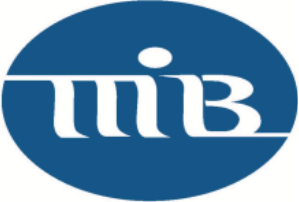As we begin to feel things heating up in midsummer, I can’t help but think of the tremendous momentum MIB has built in the last few months and how proud I am to be a small part of it. Since my last message in April, it has been a busy time for MIB board members. For several of us, this included a trip out to Washington, D.C., for ICBA’s Capital Summit in May, followed by a return trip out to D.C. for me as a member of the ICBA Bank Operations Committee in June. Both visits had numerous memorable community banking experiences that I will hold on to for quite some time. Although this article will highlight much of this for you, I shared in far greater detail all that took place when we gathered together in July.
The Capital Summit in May included ICBA committee meetings for many of us, general and breakout sessions, and meetings with our state congressional leaders. My time there was kicked off by attending my ICBA Bank Operations Committee meeting whose main topic of discussion was what the U.S. Securities and Exchange Commission was doing in the fight against cryptocurrencies and other digital assets. The committee’s guest for the discussion was Valerie Szczepanik, the Director of FinHub at the SEC, which is the arm of the SEC investigating and bringing enforcement actions against crypto and stablecoin companies. It was an incredibly fascinating meeting filled with vast amounts of information in which Ms. Szczepanik was very cautious not to discuss any items related to ongoing investigations. Interestingly enough, the SEC filed securities charges against two of the largest cryptocurrency companies operating in the U.S. within three weeks after this meeting.
Of all the meetings during the Summit, I think the one that will stick with me the most wasn’t even on any Summit agenda. It just so happened that while we were all out in D.C., the Senate Banking Committee held hearings on the collapse of Silicon Valley Bank (SVB) and Signature Bank with testimony being given by each bank’s CEO and Chairmen. It was incredibly interesting being in the audience and witnessing what I can only describe as a modern-day tar-and-feathering of the bank executives.
I flew back to D.C. again in June for an ICBA Bank Operations Committee meeting with representatives from the Federal Reserve. While I was there, I took advantage of the good timing to attend a weekly “Montana Coffee” session that Montana’s congressmen hold for constituents in D.C. from Montana. I was able to have discussions with representatives from both Daines’ and Tester’s offices and was able to grab a few minutes with Tester to discuss some updates on a few community banking issues. The Committee’s main topic of discussion was the upcoming launch of the Federal Reserve’s FedNow product (their 24/7 bank funds transfer system). In addition to the regular 20 community bank member committee, this meeting included eight officials from the Federal Reserve’s payment division and a significant number of ICBA staff. After listening to the Fed officials discuss how the product would operate and that they would like to see as many banks opt into using the product as possible, I expressed a couple of concerns that I personally had as a community banker — those of income and liquidity.
First, with the new product providing direct payment rails between banks that I see effectively replacing payment methods just as debit and credit cards in the future, I asked how community banks are supposed to replace the lost revenue that this will create with the loss of interchange fees. Their response was a predictable one that talked about how the new system will bring efficiencies to financial institutions leading to cost savings rather than replacing the income source. I fail to see how those offsetting items could possibly be equal.
Second, and perhaps the most frightening aspect of FedNow creating a funds transfer system that operates 24/7 is the liquidity risk it creates. While the Fed does have controls in place to help manage this risk, I asked the group to think about what would have happened had the FedNow system been in place at SVB and other failed institutions this past March. As quickly as deposits ran out of those banks without FedNow, imagine how drastically the speed of withdrawals would have been magnified, giving customers the ability to transfer funds out to other banks via an app on their phones. I stated that my greatest fear of the product was how fast a rogue social media post could spread like wildfire and cause an exodus of deposits that would be absolutely crippling. The way George Bailey (the local banker in the movie It’s a Wonderful Life) calmed his customers’ panic during a bank run may be a thing of the past, but with this product, we could be thrown so far into a modern-day immediate gratification run that no institution could retain any level of response time whatsoever. The Fed’s response to that question was that they would be monitoring anomalies in real-time in the background and would reach out to a predetermined officer at the bank to see if the bank wanted the FedNow connection shut down, at which time they could turn it off. While there are so many concerns I have with this statement, the biggest one is that small community banks would then be relying on the Federal Reserve to monitor and manage their deposits at all hours of day and night, seven days a week. By the time the systems were to be shut down, it could already have been too late.
We have much to do as an organization here to stand strong and continue to advocate for what’s in the best interest of smaller community banks. I look forward to discussing this in further detail with you and so much more at our upcoming convention. I realize that although I am writing this beforehand, you will not be reading my words until after we have met. Know that I am very much looking forward to spending those few days with you, building even greater connections, brainstorming new solutions and carving out a better direction together, and I can already promise you that we will have had yet another memorable time. Until then …
Tim Schreiber









